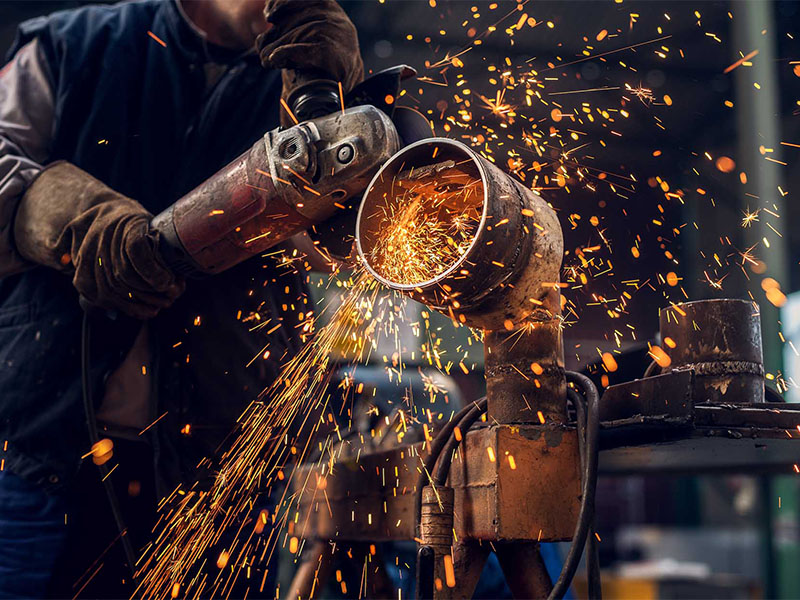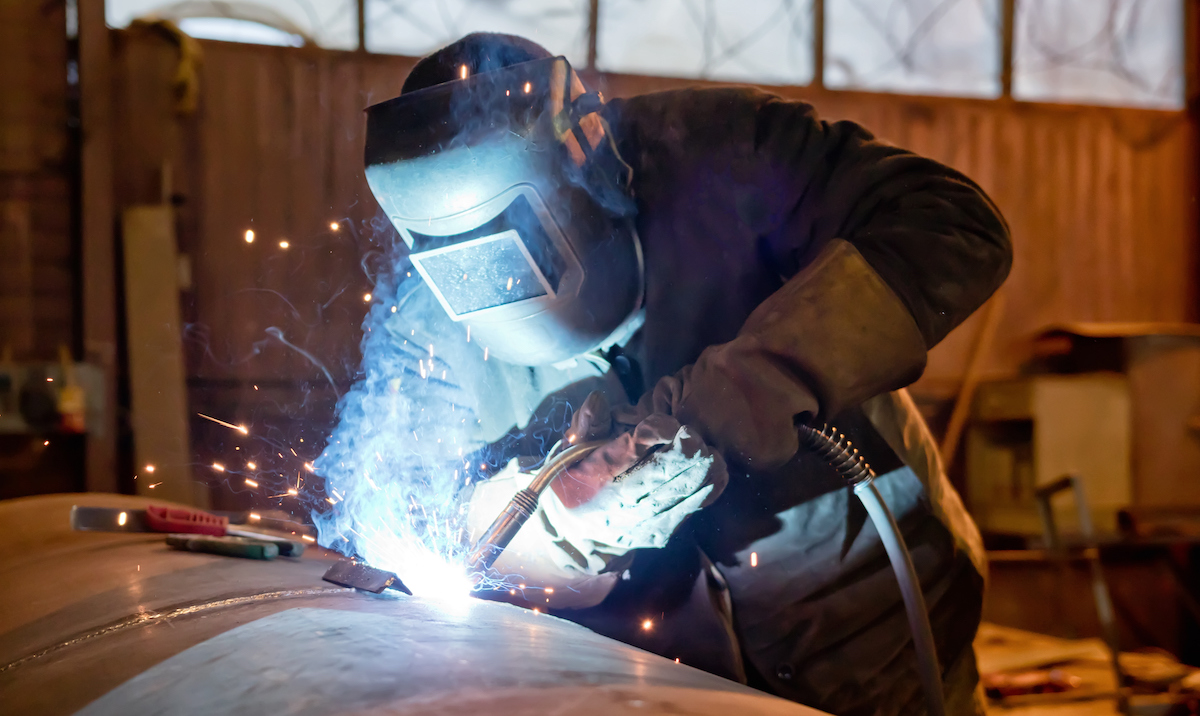All Concerning Welding: Secret Insights Into Techniques and Ideal Practices for Success
Welding includes a variety of methods, each fit for certain materials and applications. Comprehending these methods, such as GMAW, SMAW, and TIG, is essential for attaining ideal outcomes. The best devices and security practices can not be overlooked. As prep work and fixing play vital roles in the welding process, grasping these elements can substantially boost the quality of the last item. What are the crucial aspects that ensure a successful weld?
Comprehending Different Welding Methods
Welding strategies incorporate a variety of approaches, each matched to details applications and materials. Amongst one of the most common techniques are Gas Metal Arc Welding (GMAW), Secured Metal Arc Welding (SMAW), and Tungsten Inert Gas Welding (TIG) GMAW, also referred to as MIG welding, is preferred for its rate and adaptability, making it excellent for slim materials. SMAW, or stick welding, is preferred for its simpleness and performance in outdoor environments, specifically with thicker steels. TIG welding provides accuracy and control, making it appropriate for elaborate work and non-ferrous steels (Montana Mobile Welding and Repair Fabrication). Each method has its special advantages and factors to consider, permitting welders to pick the best method based upon the project's requirements, product type, and desired end results. Recognizing these methods is essential for successful welding
Vital Welding Devices and Devices
While various welding strategies require specific skills, the appropriate devices and devices are similarly essential for accomplishing quality outcomes. Important welding equipment consists of welding devices, which vary depending upon the method-- such as MIG, TIG, or stick welding. Safety gear, including aprons, headgears, and handwear covers, warranties safety and security and convenience throughout the process. Additionally, components and clamps help secure products in position, ensuring accuracy in welds. Consumables like welding rods, cable, and securing gas are also crucial elements that affect the top quality of the weld. Moreover, tools such as mills and cutters facilitate surface area prep work and post-weld completing, adding to a professional result. Purchasing premium equipment ultimately boosts the efficiency and efficiency of welding tasks.
Security Practices in Welding
Proper security practices are vital in the welding industry to secure employees from possible dangers. Welders should use suitable individual safety equipment (PPE), including helmets with correct shading, handwear covers, and flame-resistant garments. Sufficient air flow is important to reduce exposure to harmful fumes and gases created throughout the welding process. Additionally, workers should be educated in the proper handling of welding equipment to avoid accidents. Fire precaution, such as maintaining combustible products away from the welding location and having fire extinguishers readily offered, are essential. Regular inspections of equipment and offices can help recognize potential hazards prior to they bring about crashes. By adhering to these security techniques, welders can develop a more secure working atmosphere and lessen threats related to their profession.
Readying Materials for Welding
Preparing materials for welding is a crucial step that considerably affects the top quality and integrity of the end product (Welding). Appropriate preparation includes cleansing the surfaces to get rid of pollutants such as corrosion, dirt, and oil, which can compromise the weld. Methods such as grinding, fining sand, or using solvents are commonly utilized to achieve a clean surface area. In addition, making certain that the products fit together snugly is vital; voids can lead to weak welds. It's likewise vital to consider the alignment and positioning of the elements, as this will influence Belgrade Welding the simplicity of welding and the last end result. Lastly, choosing the appropriate filler product and ensuring compatibility with the base steels is important for accomplishing solid, resilient welds
Tips for Achieving High-Quality Welds
Achieving top notch welds needs interest to information and adherence to best techniques throughout the welding procedure. Appropriate joint preparation is vital, making certain surfaces are clean and cost-free from impurities. Picking the proper filler material and welding strategy based upon the base steels is critical for ideal bonding. Keeping constant travel rate and angle while welding can advertise and stop flaws uniformity. Additionally, managing heat input is important; extreme heat can result in warping and weakened joints. Routinely examining the welds during the process enables immediate changes if needed. Utilizing suitable post-weld treatments, such as cleaning and tension relief, can enhance the resilience and stability of the weld, ultimately making sure an effective end result.
Fixing Usual Welding Issues
Welding commonly provides obstacles that can impact the quality and integrity of the last item. Typical issues such as porosity, irregular weld beads, and getting too hot can develop, each calling for certain troubleshooting methods. Recognizing these problems is crucial for welders to enhance their skills and attain ideal results.
Porosity Troubles Explained
Porosity can commonly be forgotten, it continues to be a crucial issue in welding that can jeopardize the integrity of an ended up product. Porosity refers to the existence of tiny gas pockets within the weld grain, which can lead and compromise the joint to early failing. This trouble normally emerges from pollutants, dampness, or inappropriate shielding gas coverage throughout the welding procedure. To minimize porosity, welders need to validate that the base products are dry and clean, use ideal securing gases, and preserve consistent welding criteria. Frequently checking the devices and atmosphere can also help recognize possible problems before they manifest in the weld. Attending to porosity successfully is essential for achieving solid, long lasting welds that satisfy quality criteria.

Inconsistent Weld Beans
Inconsistent weld beads can substantially affect the quality and toughness of a finished product. Various factors add to this concern, including inappropriate traveling speed, incorrect amperage setups, and irregular electrode angles. When the welder moves too quickly, a grain might appear slim and lack infiltration, while relocating too slowly can trigger too much buildup. Furthermore, using the wrong amperage can result in either undercutting or too much spatter, both of which compromise weld integrity. The welder's strategy, such as irregular lantern movement, can additionally lead to unequal bead appearance. To alleviate these issues, welders must concentrate on maintaining constant, controlled activities and making sure proper devices settings to achieve harmony in their welds. Consistency is vital to achieving solid and reliable welds.
Overheating and Bending Issues
Excessive warm throughout the welding process can lead to substantial overheating and deforming concerns, affecting the structural honesty of the work surface. These problems usually materialize as distortion, which can endanger placement and fit-up, making additional assembly testing. Variables adding to overheating include the choice of welding criteria, such as voltage and take a trip rate, as well as the kind of product being bonded. To alleviate these problems, welders should keep constant travel rate and proper warm input while keeping an eye on the workpiece temperature level. Furthermore, preheating or post-weld warmth treatment can aid relieve stress and anxieties created by quick air conditioning - Belgrade. Normal evaluation and adherence to ideal techniques are vital in preventing getting too hot and making sure the durability and dependability of bonded frameworks
Regularly Asked Inquiries
What Are the Occupation Opportunities in the Welding Market?
The welding sector uses varied profession opportunities, including positions as welders, instructors, inspectors, and engineers. Specialists can function in production, construction, aerospace, and auto industries, gaining from solid need and affordable incomes in numerous duties.
Exactly How Can I Boost My Welding Speed Without Sacrificing Quality?
To boost welding rate without giving up quality, one need to practice reliable strategies, maintain tools, enhance setups, and enhance hand-eye control. Routine training and seeking feedback can also greatly add to accomplishing quicker, top notch welds.
What Certifications Are Readily Available for Welders?
Countless certifications exist for welders, consisting of those from the American Welding Society (AWS), the National Facility for Building And Construction Education And Learning and Study (NCCER), and various industry-specific companies. These qualifications enhance employability and show skill proficiency.
Exactly How Does Welding Influence the Characteristics of Metals?
Welding influences the properties of steels by altering their microstructure, which can result in modifications in ductility, firmness, and strength. Warm input and cooling rates during the procedure substantially impact these material features.
Can I Bonded Dissimilar Metals With Each Other?

Comments on “Tips from Montana Mobile Welding and Repair Belgrade prevent porosity and distortion in welding”